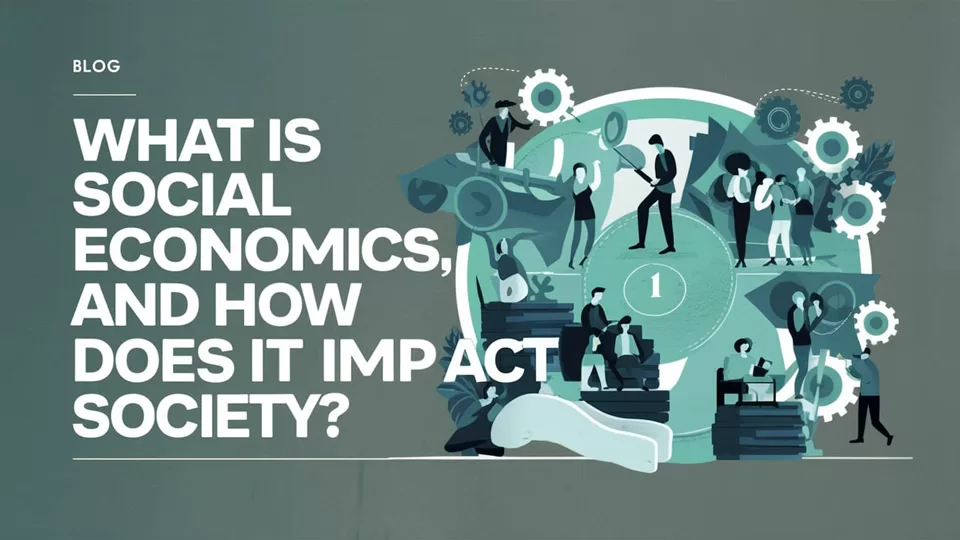Understanding Social Economics
Social economics, also known as socioeconomics, is a branch of economics that studies the relationship between social behavior and economic activity. This field examines how social processes influence economic activity and how economic changes impact social structures. Social economics aims to understand how different social groups and socioeconomic classes behave within society, particularly in their roles as consumers.

Key Takeaways
- Definition: Social economics explores the interplay between social behavior and economic activity.
- Interdisciplinary Approach: It borrows tools from other social sciences, such as psychology and sociology.
- Broader Perspective: Social economics considers factors beyond traditional economics, including environmental and ecological impacts on consumption and wealth.
- Behavior Analysis: It examines how specific social groups or socioeconomic classes behave and make economic decisions.
Understanding Social Economics
Social economists often diverge from conventional economic theories, focusing on factors outside mainstream economics, such as environmental and ecological influences on consumption and wealth. They study the economic choices of different socioeconomic classes, which are groups of people with similar social and economic characteristics, like education level, occupation, and ethnic background.
Two Perspectives of Social Economics
- Neoclassical Microeconomics: Pioneered by Gary Becker, this perspective applies traditional economic tools to non-traditional areas like crime, drug abuse, marriage, and family decisions.
- Interdisciplinary Approach: This perspective uses insights from sociology, psychology, and other social sciences to study economic behaviors and predict social trends that could impact the economy.
Impact of Social Economics
Socioeconomic factors can reveal inequalities in wealth, education, and social status, influencing life decisions such as career and family choices.
Families
Socioeconomic status strongly correlates with family structure and outcomes. Low-income households are more likely to experience domestic violence and child neglect, leading to poorer health outcomes later in life.
Education
Children from lower socioeconomic backgrounds often start school with fewer skills, leading to lower academic achievement and income in adulthood.
Ethnic Minority Status
Socioeconomic status often correlates with membership in marginalized ethnic groups, which face higher unemployment and poorer health outcomes.
Violence
Individuals from lower socioeconomic backgrounds are more exposed to violence, affecting their academic and employment prospects and increasing homelessness due to domestic violence.
Example of Social Economics
An individual’s socioeconomic status significantly impacts their educational attainment and financial security. For example, children from affluent families are more likely to access higher education and build social networks that lead to better economic opportunities. In contrast, those from low-income families often lack these opportunities and face greater educational and financial challenges.
Social Economics and Government Policy
Governments influence social economics through monetary and fiscal policies, which impact employment, income distribution, and access to essential services. Policies like progressive taxation and targeted social spending aim to reduce income inequality and promote social welfare.
Social Economics and the Gender Wage Gap
The gender wage gap reflects structural inequalities in the labor market, perpetuating unequal access to opportunities and resources. Social economics examines how gender norms and stereotypes influence hiring practices, promotions, and wage setting, contributing to broader income inequality.
Frequently Asked Questions
What Are Examples of Socioeconomic Factors? Socioeconomic status includes factors like income, education, financial security, and social status.
What Is Socioeconomic Well-Being? It refers to the optimal mix of social and economic factors that contribute to a person’s health and well-being.
How Do You Calculate Socioeconomic Status? Key measures include income, education, and occupation, considering factors like family size and subjective perceptions of social class.
What Income Is Considered Low Socioeconomic Status? In the U.S., families earning less than 80% of the Area Median Income (AMI) are considered low-income, while those earning less than 50% are considered Very Low Income.
The Bottom Line
Social economics examines the relationship between social factors and economic activity, highlighting how social processes impact economic behavior and vice versa. By studying these interactions, social economics can reveal broader societal inequalities and inform policies aimed at promoting social welfare and reducing economic disparities.
4o

Roger Varley is a seasoned financial expert with over two decades of experience and an MBA from Harvard Business School. He specializes in commodity trading and portfolio diversification, and has authored several bestsellers that simplify complex financial concepts for investors. Residing in New York City, Roger continues to share his knowledge through his writing and lectures at financial conferences worldwide.



